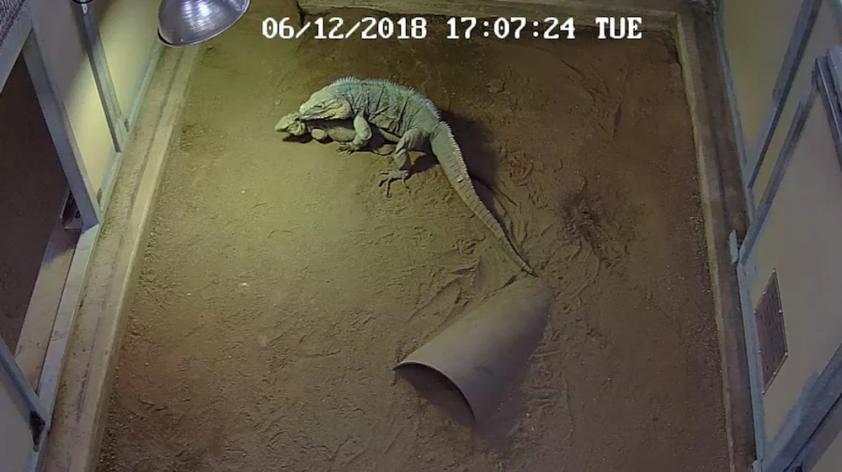
Iguana Watching 2018
For the past 25 years, the Institute for Conservation Research at the San Diego Zoo Safari Park has maintained an off-site breeding and research center for critically endangered rock iguanas.
This area, the Griffin Reptile Conservation Center (GRCC), has been successful in breeding the three most endangered lizards in the world: the Grand Cayman Blue iguana Cyclura lewisi, Jamaican iguana C. collei and Anegada Island iguana C. pinguis. A strict studbook determines which animals are allowed to produce offspring together therein keeping a healthy and genetically diverse U.S. population.
Typically, after two iguanas have bred together and produced offspring for more than a few years, the pairs are separated and we must then find new mates for each animal. This is where things become tricky.
Iguanas are social animals and often form pair bonds although males generally breed with as many females as they can. “Howdy doors” have been a useful tool for zoos that allow future mates to get to know one another without actually being in contact. Animal introductions can become violent at times so any chance to diffuse an aggressive situation is gladly taken by keepers for many species. The doors are typically see-through and often have holes in them so that animals can not only see but also smell one another.
Over the winter of 2017, we installed howdy doors in all of our enclosures at the GRCC. We are currently studying mate choice and whether or not allowing visual and olfactory access to potential mates prior to introduction has an effect on breeding success in our iguanas.
With gifts from the Ocelots group in 2016 and 2017, we were able to purchase cameras and recorders for 16 enclosures at the GRCC. These cameras have been instrumental in not only our research on mate choice, but in keeping a close eye on the health of the iguanas. The cameras allow us to observe behavior without the iguanas actually seeing or interacting with us.
To date, I have analyzed over 500 hours of videos and the results are encouraging. Although we have yet to analyze all of our data from 2018 we are seeing a trend: iguanas that are allowed access to one another throughout the year seem to be exhibiting more positive behaviors to their potential mates and are breeding with these mates much better than iguanas that are not allowed visual access throughout the year.
I have many hours of video to study still, but one thing is very intriguing: iguana watching is fun and I am seeing behavior in the iguanas that I have never seen, even after 26 years in the zoo and in the field! Stay tuned for more notes from Iguana Cam in the future.













